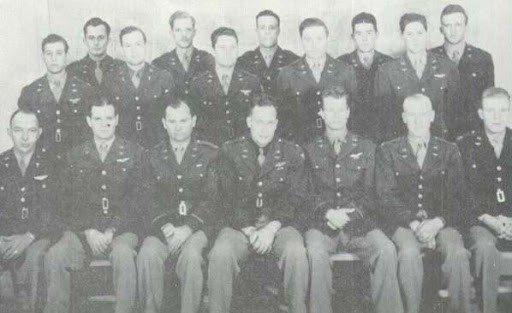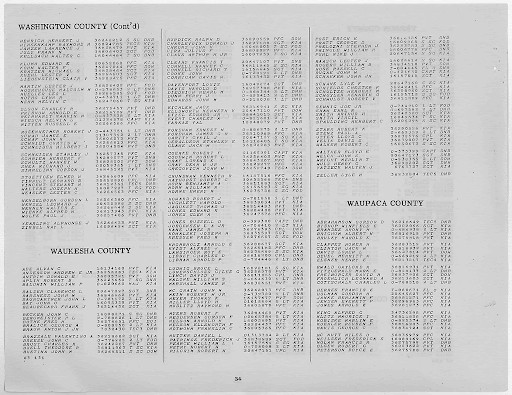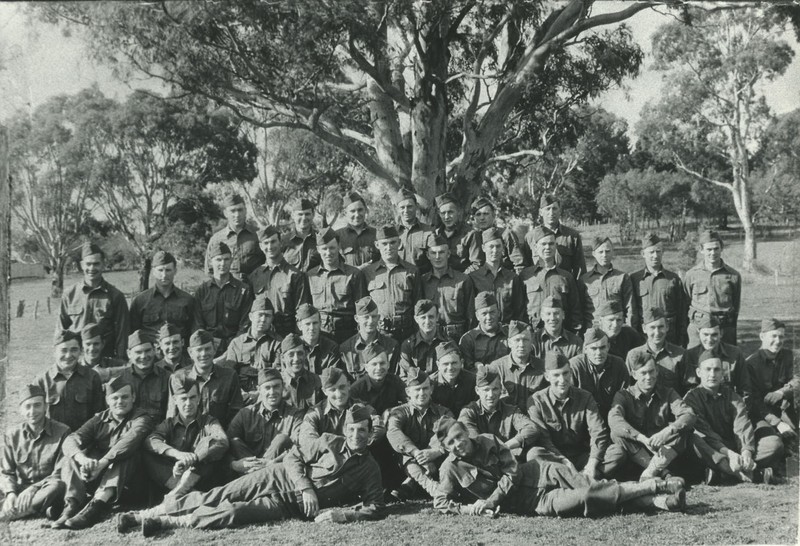The Patrinos Brothers - Honor and Tragedy in WW2
Introduction
Text-to-speech Audio
World War 2 was a frightening time for the American people, as many watched their children either enlist or be drafted to join the war effort against the Axis powers. Tragically, many American soldiers never made it home, as one family located in this small house in Waukesha, Wisconsin Would come to find. Little did the Patrinos family living there know that during the war, their two sons Frederick and Carl would both fight valiantly in the name of democracy - but only one of them would ever return home. Frederick was drafted into the air force on December 18, 1943, at the age of 19 while Carl enlisted into the infantry on October 15, 1940, at the age of 21. Tragically, Frederick was killed in action assumably in Norway during a routine supply drop run. Frederick’s body was never found. While both brothers were awarded purple hearts for their efforts, it couldn't even come close to amount to losing a son or brother.
Images
Pictured is the 492nd Bombardment group - the squadron that Frederick Patrinos was a part of. The air squadron was responsible for dropping supplies behind enemy lines - food, ammo, and weapons.

Pictured is a list of the men either dead or missing in action from Waukesha county in the year 1945. At the bottom middle of the chart, Fredericks's name is written along with his serial number and his status of presumed dead.

Fort Sheridan, where Carl was stationed and also discharged.

The 32nd "Red Arrow" division that Carl Patrinos was a part of. The division was comprised of mainly midwestern soldiers.

Waukesha Freeman article detailing the believed death of Frederick Patrinos. The article mentions how he has been MIA for over a year and that his family is grieving.

Backstory and Context
Text-to-speech Audio
Carl Patrinos was a stock clerk when he willingly enlisted into the United States infantry on October 15, 1940. It's possible that because of the beginning of the war on the European front, Carl saw an opportunity for himself to get out of his job and find something worth fighting for. He quickly left his hometown of Waukesha, Wisconsin, and left behind his parents as well as Frederick.
Once Enlisted, Carl would be placed in the 32nd division, which was a division made up of midwestern men in WW2. The 32nd division spent most of its time fighting on the pacific front - making their way towards Japan in brutal island hopping techniques. The pacific was known for being one of the most brutal combat-centered areas in WW2, filled with jungle warfare and constant focused attacks. They fought the longest in combat in WW2 compared to any other infantry unit, with a total of 654 days of combat. Frederick would be commissioned overseas in the Philippines, as the United States had entered the war against the axis and was fighting against the Japanese forces. Carl also would see action in Papua New Guinea and Australia. Eventually, Carl would return home the December of 1945 - but to devastating news.
Frederick Patrinos was the younger brother, and unfortunately unlike his brother was drafted on December 18, 1943, where he was entered quickly into the air force and joined the 492nd Bombardment group. This group was known for delivering supplies to captured axis territories, aiding resistance throughout Europe. The group earned the nickname “The Carpetbaggers” due to their low-altitude plane supply drop patterns. Frederick even was qualified as a “sharpshooter of the sky” for his skills in bombing and supply flyovers. However, Fredericks's luck was running out.
On April 19, 1945, Frederick and his crew went on a routine operation to deliver supplies and provide any possible air support for the Norwegian freedom fighters. No one knows what happened to their plane, but it was presumably shot down by enemy anti-aircraft. Fredericks's body was never found - and he was declared dead a year later. Frederick was yet another innocent soul lost to this bloody war - with a family left behind and a brother they also had to hope would come home safely.
Unfortunately, war has drastic consequences which further shows the courage of these two men. Both brothers followed extremely different paths on the field in world war 2 - from their military branch, and unfortunately to the very end. No family wants to lose a child, no matter the circumstances. While Frederick fought valiantly and saved who knows how many troops on the ground with either supplies or gunfire, his life was cut far too short. Because of his bravery, a family was left without a son; or a brother. An extremely unfair trade for bravery. The emptiness left in that house on W North Street would have been haunting.
Sources
“32nd Infantry (Red Arrow) Division.” Military Veterans Museum, https://mvmec.org/32nd-division/.
“32nd Infantry Division.” US Army Divisions, https://www.armydivs.com/32nd-infantry-division.
Co., Geo. R. Lawrence. “Fort Sheridan, Ill., 600 Ft. Elevation.” Library of Congress, 1 Jan. 1970, https://www.loc.gov/pictures/item/2007663923/.
Fitzgerald, Keith. “First Shots in the Pacific War.” American Heritage 68, no. 1 (Winter 2023): 1. https://search-ebscohost-com.pioproxy.carrollu.edu/login.aspx?direct=true&AuthType=cookie,ip,cpid&custid=s6222004&db=aph&AN=161359409&site=ehost-live&scope=site.
Parnell, Ben. 1987. Carpetbaggers: America's Secret War in Europe: A Story of the World War Ii Carpetbaggers, 801st/492nd Bombardment Group (h), U.s. Army, Eighth Air Force (version 1st ed.). 1st ed. History Reference Center. Austin, Tex.: Eakin Press. https://carrollu.on.worldcat.org/search/detail/659355638?queryString=492nd%20bombardment%20&expandSearch=true&translateSearch=false&databaseList=1732%2C1734%2C2375%2C3868%2C638&clusterResults=false&groupVariantRecords=true
“Sergeant Patrinos Believed Dead.” Waukesha Freeman, May 1, 1946.
World War 2 service record, Brown envelope gold star 17 July, 1946. 1 Waukesha County World War 2 Records History World War 2 Records History. Waukesha County Historical Society and Museum. Waukesha Museum.
Parnell, Ben. 1987. Carpetbaggers: America's Secret War in Europe: A Story of the World War Ii Carpetbaggers, 801st/492nd Bombardment Group (h), U.s. Army, Eighth Air Force (version 1st ed.). 1st ed. History Reference Center. Austin, Tex.: Eakin Press. https://carrollu.on.worldcat.org/search/detail/659355638?queryString=492nd%20bombardment%20&expandSearch=true&translateSearch=false&databaseList=1732%2C1734%2C2375%2C3868%2C638&clusterResults=false&groupVariantRecords=true
Co., Geo. R. Lawrence. “Fort Sheridan, Ill., 600 Ft. Elevation.” Library of Congress, 1 Jan. 1970, https://www.loc.gov/pictures/item/2007663923/.
“32nd Infantry Division.” US Army Divisions, https://www.armydivs.com/32nd-infantry-division.
“Sergeant Patrinos Believed Dead.” Waukesha Freeman, May 1, 1946.
